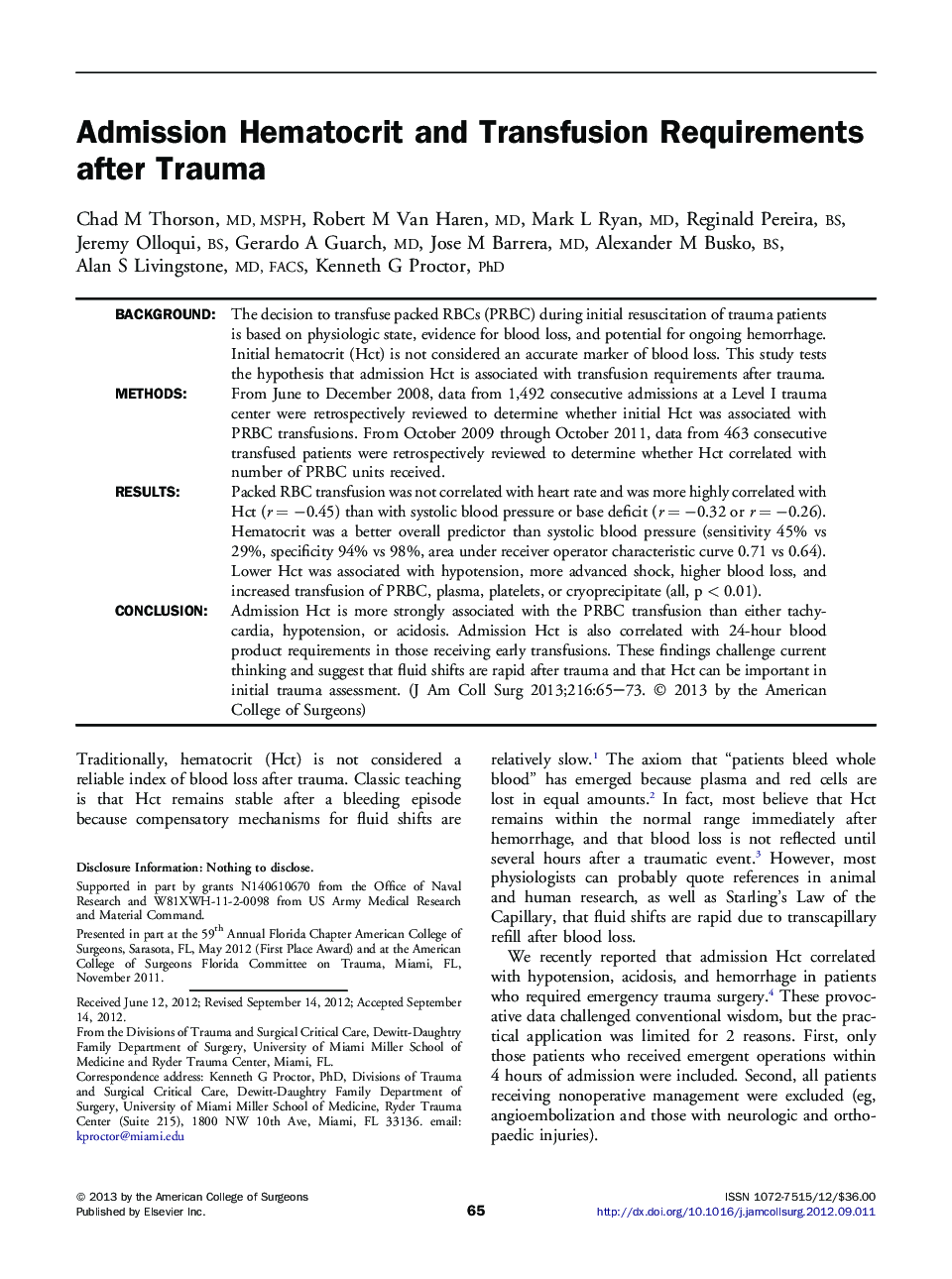| Article ID | Journal | Published Year | Pages | File Type |
|---|---|---|---|---|
| 4292717 | Journal of the American College of Surgeons | 2013 | 9 Pages |
BackgroundThe decision to transfuse packed RBCs (PRBC) during initial resuscitation of trauma patients is based on physiologic state, evidence for blood loss, and potential for ongoing hemorrhage. Initial hematocrit (Hct) is not considered an accurate marker of blood loss. This study tests the hypothesis that admission Hct is associated with transfusion requirements after trauma.MethodsFrom June to December 2008, data from 1,492 consecutive admissions at a Level I trauma center were retrospectively reviewed to determine whether initial Hct was associated with PRBC transfusions. From October 2009 through October 2011, data from 463 consecutive transfused patients were retrospectively reviewed to determine whether Hct correlated with number of PRBC units received.ResultsPacked RBC transfusion was not correlated with heart rate and was more highly correlated with Hct (r = −0.45) than with systolic blood pressure or base deficit (r = −0.32 or r = −0.26). Hematocrit was a better overall predictor than systolic blood pressure (sensitivity 45% vs 29%, specificity 94% vs 98%, area under receiver operator characteristic curve 0.71 vs 0.64). Lower Hct was associated with hypotension, more advanced shock, higher blood loss, and increased transfusion of PRBC, plasma, platelets, or cryoprecipitate (all, p < 0.01).ConclusionAdmission Hct is more strongly associated with the PRBC transfusion than either tachycardia, hypotension, or acidosis. Admission Hct is also correlated with 24-hour blood product requirements in those receiving early transfusions. These findings challenge current thinking and suggest that fluid shifts are rapid after trauma and that Hct can be important in initial trauma assessment.
